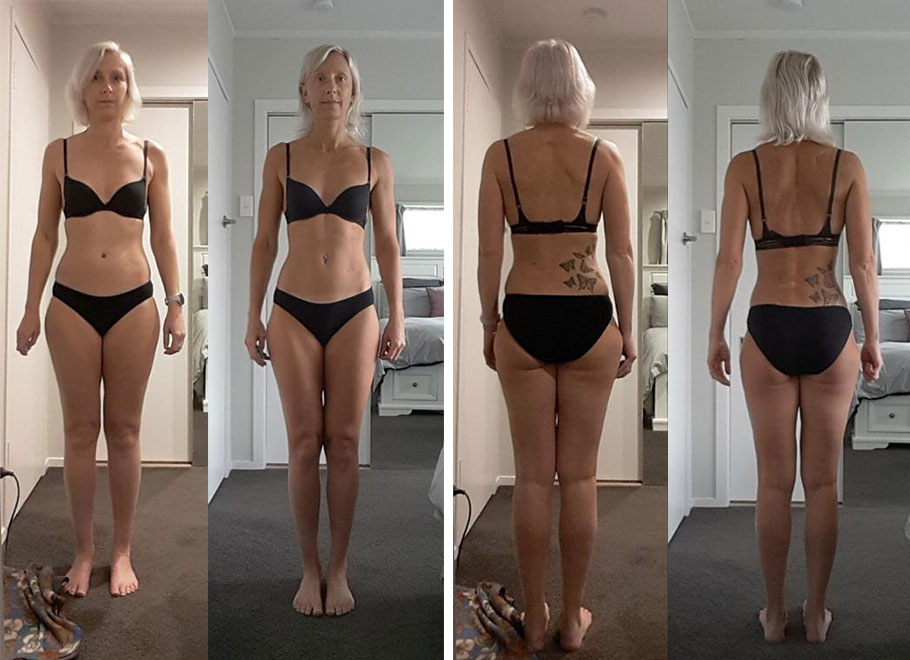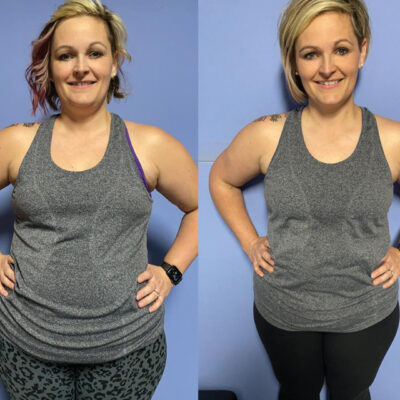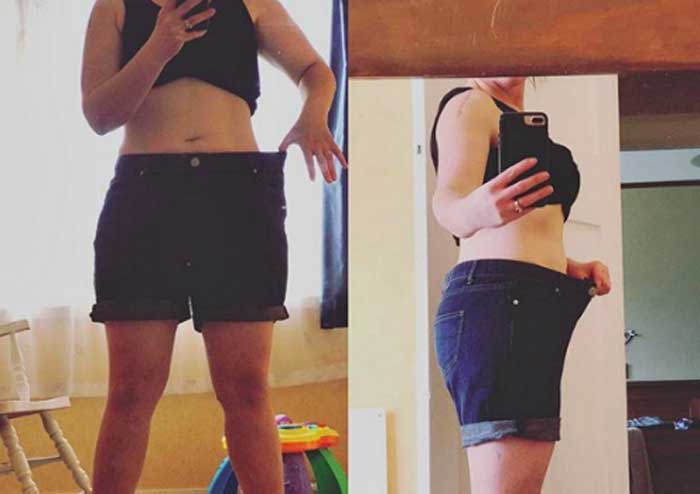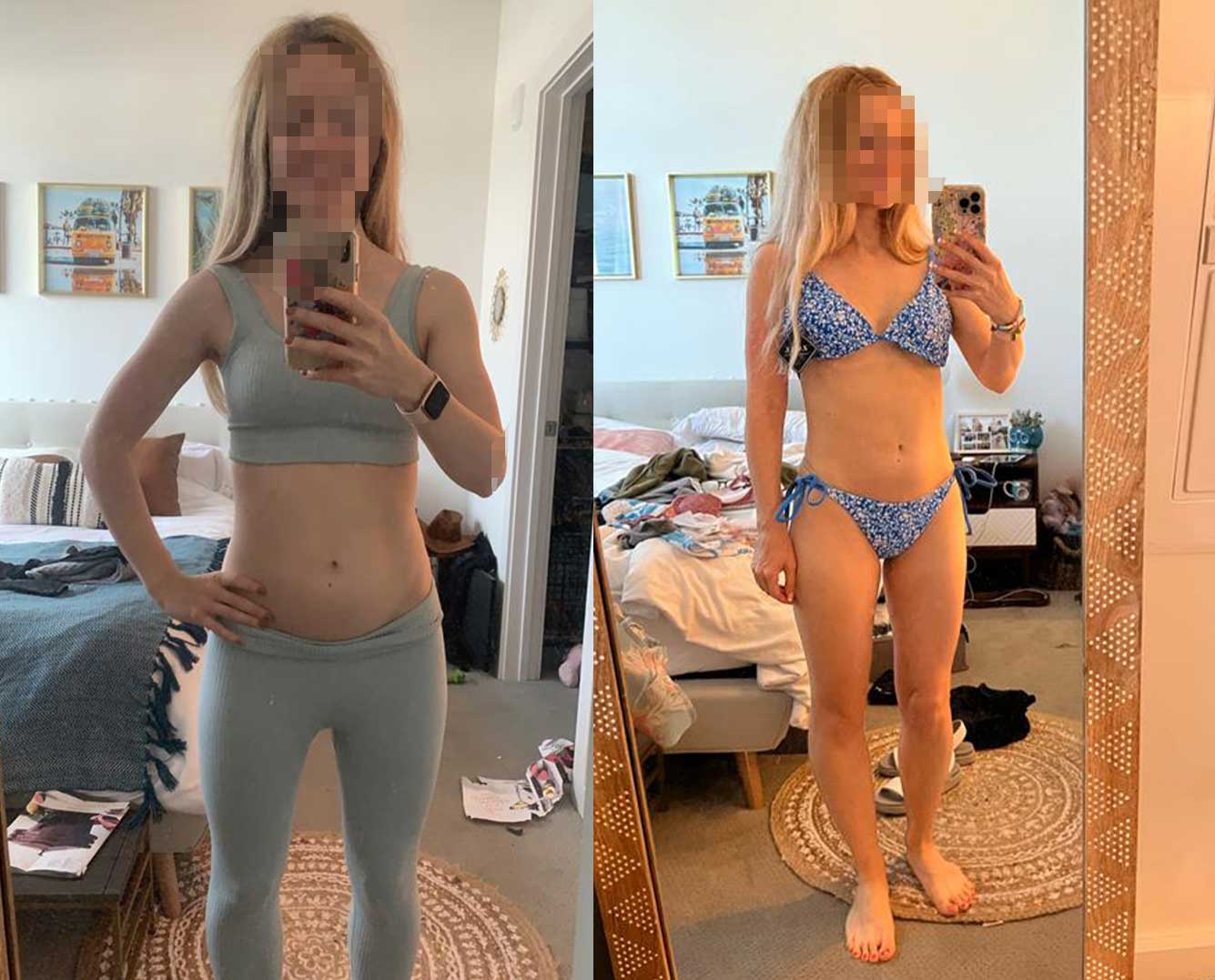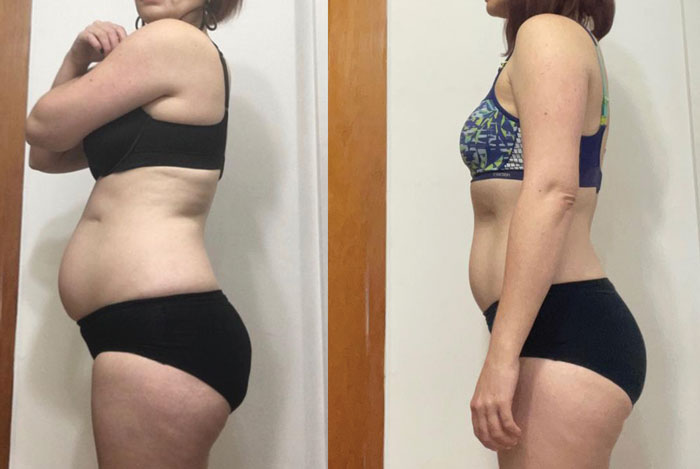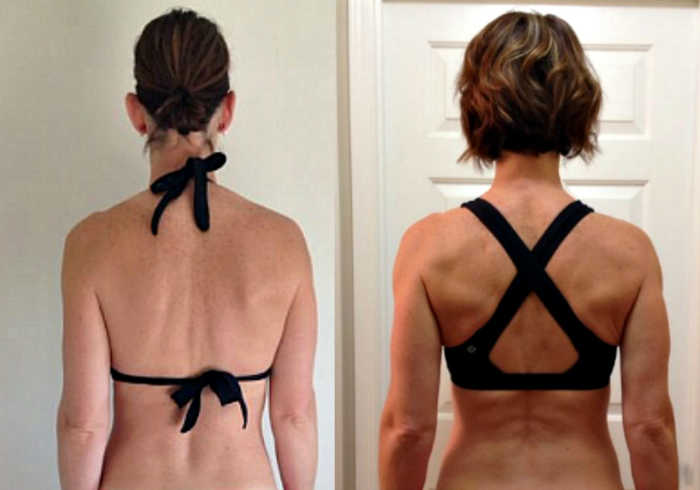
Want to get toned without bulking up? I totally understand. I’m someone who puts on muscle really easy – and if you do too – I’ll teach you how to be more strategic with your training to get the look you want.
But what does the word “tone” mean? Many fitness experts don’t like words such “tone” or “toning up” because technically you can’t tone a muscle. Your muscles either grow or they shrink. You either get leaner or you get fatter. You can’t get “toned.”
While that may be true, in reality, women use the word “tone” to mean a whole lot of things, including:
- looking slim but fit,
- less sagging and cellulite,
- more firmness,
- being able to see some muscle but not having the sort of muscle that makes us look bigger.
So even though I don’t usually use the word “tone” myself, I understand what you mean and, in this article, I’m going to tell you how to achieved the toned look without getting bulky.
But First…Do You Have Weight To Lose?
Those same people who tell you there’s no such thing as “getting toned” will tell you that women can’t get bulky from lifting weights. They say that the problem isn’t the muscle you build from weight training rather it’s the fat covering your muscles. So, essentially they are saying the “bulk” or “thickness” you feel is from fat not muscle.
There is some truth to this – some women do need to lose weight to feel better about their perceived “thickness” or “bulkiness.” For example, over the years, I’ve always maintained a tight weight range but when I’m on the heavier side of that range, my legs always feel more bulky. Similarly, if you build muscle under a healthy and natural layer of fat, then you could very well feel bulky.
It could be that if you lost even just a few pounds, you would feel leaner and more “toned.”
If you’re not looking to lose weight but still feel too muscular, the right training strategy can make all the difference. That’s where my programs come in. When you join, I’ll help you assess your body type and create a tailored plan to shape and tone your physique – so you feel confident, strong, and feminine.
How Women Get Bulky
You should know that not every woman will get bulky from weight training.
Certain body types are more prone to “thickness” or “bulking up.”
If you are someone who puts on muscle really easily you probably have a mesomorph body type. Mesomorphs easily build muscle and need to be careful about these areas:
- quads
- thighs
- arms
- lats
- torso.
In my experience working with women over the years, I’ve also found that women with an hourglass shape similarly build muscle easily in certain areas (ie. the glutes and thighs).
If you are a mesomorph or an hourglass you need to be more strategic with your training.
If you build too much muscle in certain areas, you’ll end up looking bigger. This is especially true if you don’t lower your body fat as well as building muscle, because you’ll build muscle with a layer of fat over it – which means you will look even bigger than before.
When I first started training I ended up too much muscle in areas like my quads and my lats because I didn’t know what I was doing. I had a great trainer but he taught me to train like a guy. I’ve since spent years learning how to lose muscle in certain areas and achieve a more feminine look. This whole experience was in large part what inspired me to start Female Fitness Systems and write articles like this one. So I could teach women like you how to train – like a woman. Not like a man.
It will help if you can see what I mean so here’s a photo from 2013 when I was working with a male trainer and before I really understood what I was doing in the gym. Around this time I started to feel self-conscious about my lats being too big in tank tops and I couldn’t button up blouses. Also my triceps were so big they took over my arms. I ended up with this shape because I was deferring to my trainer, training like a man and not assessing how I looked.

When I got my own training qualification and starting studying training in more depth, I realized I could create an entirely different shape. I started to think of my body as a blank canvas and be strategic about what I wanted to create.
First, I actually had to quit training my lats to take some size off. Instead, I focused on my rear delts and upper back which looks amazing when developed in females. In the photo above my rear delts aren’t developed at all and they are almost swallowed by my big lats so you can’t see them – that’s why I had to take size off.
I also had to take size off my triceps, which I did by strategic exercise selection. Certain exercises build more size than others.
I’m not into taking selfies so I don’t have a great photo to show the difference but here’s one from a photo shoot about 18 months after I started training myself and being more strategic about my training. You can see how much more developed my shoulder/rear delt area is, how much more definition there is in my upper back and how much width I had taken off my back around the lat area. On the arm that is straight, you can also see how much size I had taken off my triceps when you compare it to the 2013 photo.

If you want to see what my back looks like and how I train in 2025, you can watch this video:
How To Get Toned
1. Choose the right style of training
There are many options when it comes to training – online apps focusing on HIIT workouts, group fitness classes, CrossFit and powerlifting are all very popular. However. if you want that “toned” look these probably aren’t the right style of training for you. Let’s consider why.
Unfortunately a lot of the training programs and apps that have become popular for women mainly use body weight training so you can do workouts quickly, at home and without equipment. These programs can help you lose weight at first – but to really transform your body you need to weight train.
For example, body weight exercises, like donkey kicks, squats and plyometrics that are utilized in these programs will never lift your glutes like exercises such as weighted glute bridges, hip thrusts and cable kickbacks which you should be doing as part of a proper weight training program. You need to work on progression both in terms of movement quality and the weight you lift – because this builds muscle and muscle (in the right amount) will give you that toned look because it creates shape and reduces the appearance of cellulite.
Powerlifting and CrossFit also offer women another way to get fit and build muscle. However, I would only recommend these styles of training for women who aren’t afraid of building muscle and potentially appearing “bulky”. Both these styles of training utilize certain exercises that build thickness in areas where the average women doesn’t want it (ie. torso and legs). The high volume of work for certain muscle groups in CrossFit can also be a problem for women. For example, if you don’t want big quads, you don’t want to do be doing a high amount of squats like you might do in a CrossFit workout because volume builds muscle and size.
At the end of the day, if you want that toned look you will need to hit the weights and the style of training you should do is known as “hypertrophy” training. Hypertrophy sounds a bit scary but it simply means to grow muscle. This is the style of training used by fitness competitors and the reason it works so well for women is that it is more strategic than other styles of training. With this style of training you regularly assess your body and adjust your training to bring up certain areas (or de-emphasize others). That’s why I love it it so much. It’s like your body is a blank slate and you get to create what you want.
Unfortunately, there is a scarcity of training programs that actually teach women to lift weights properly and to build muscle where we want it.
As we age, it’s also important to work on things like balance, posture, and bone density. When you work with me, you’ll get “functional body sculpting.” You’ll get those hypertrophy style workouts necessary to build shape (strategically of course) but we’ll also work making your body stronger and more resilient for your senior years. Learn more about online training here.
2. Dial in your diet and get a bit leaner to look toned
As we talked about earlier, your body fat level will impact on how toned or bulky you feel.
The important thing you need to know is that muscle covered by a layer of fat looks bulkier than muscle not covered in fat.
If you are someone who naturally builds muscle easily, you may need to keep yourself leaner to avoid feeling bulky.
However, you also don’t want to take your diet to the extreme. Some women diet too strictly and end up looking skinny and gaunt. You also shouldn’t be afraid of carbs because, as bodybuilders know well, carbs make your muscles look fuller and rounder (and they help you train harder too).
3. Assess and adjust – don’t skip this step!
Assessment is a crucial aspect missing from women’s training. I don’t mean bodyfat scales or pinch tests they give you at gyms – which are both highly unreliable and inconsistent. I mean stripping down to your underwear and looking in the mirror from all angles. But not in a critical way – in a curious way. Progress photos are also really helpful because it’s hard to remember where we started.
View yourself as a work in progress. Ask yourself:
- Are you actually building muscle and firming up the right areas?
- Are you getting bigger in certain areas you don’t necessarily want to add size (ie. torso, thighs)?
- If you have cellulite, are those areas looking smoother?
Do your assessments with curiosity rather than criticism. If you have lagging areas, view them as a challenge rather than a flaw. You need to be in this for the long haul and realize if you aren’t getting results, you may just need a slight adjustment or more time (especially when it comes to cellulite!).
By adjusting, I don’t mean program hopping. One of the biggest mistakes women make is jumping from program to program in the hopes of a quick fix. It’s not about choosing a completely different style of training. There are many effective ways to adjust your training program if you aren’t getting the results you want:
- Increase or decrease the volume of training for certain muscle groups
- Change your rep ranges
- Add exercises for muscle groups you want to build up (or do less exercises for muscle groups you want to de-emphasize)
- Use more advanced techniques (ie. supersets, drop sets, isometrics)
- Add more cardio
- Increase or decrease calories/carbs you consume on days you train certain muscle groups.
I’ve got your back on this …
The most important message you can take away from this is to be more thoughtful and strategic about your body and training. Also, change doesn’t happen overnight. When I set out to take size off my back I looked at it in terms of what I could achieve in a year not weeks or even months. Similarly, when I set out to reduce size off my legs, it took me at least a year to see big changes.
I’ve spent over a decade coaching women and refining the strategies that truly work to build that feminine shape. If you’re feeling stuck, check out my online training programs. Having a coach who understands your body and your stage of life can make all the difference.



